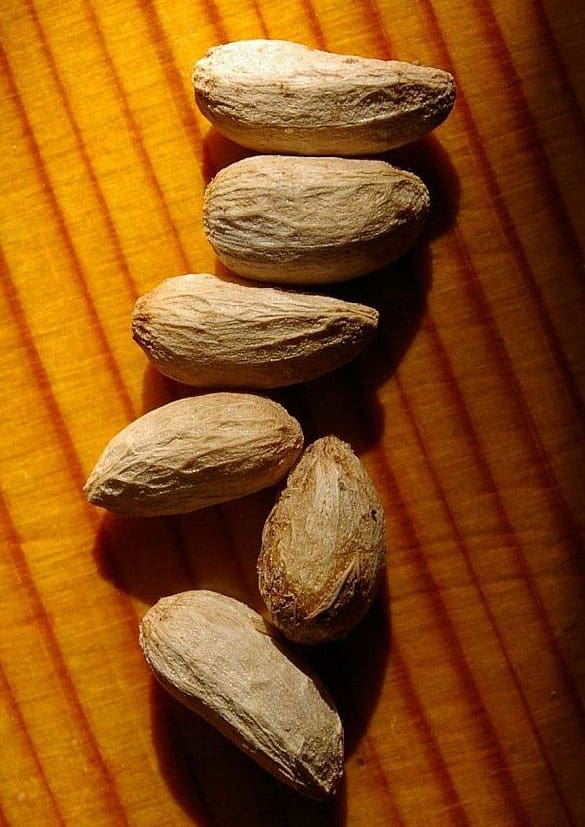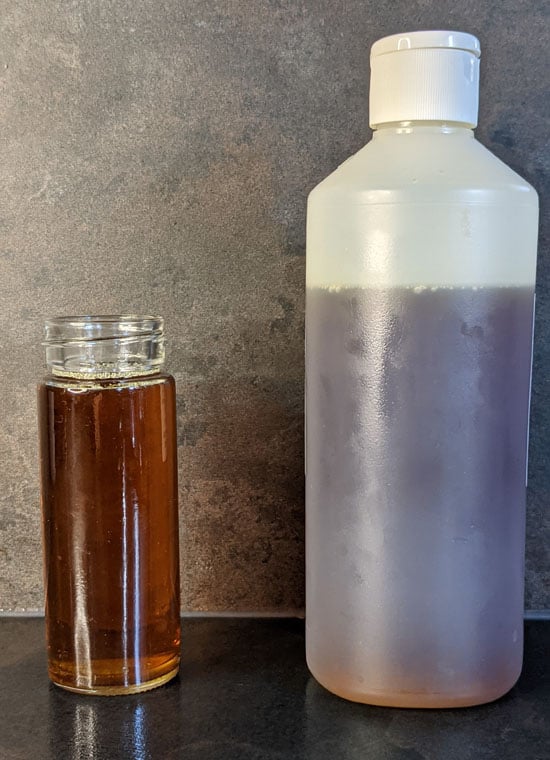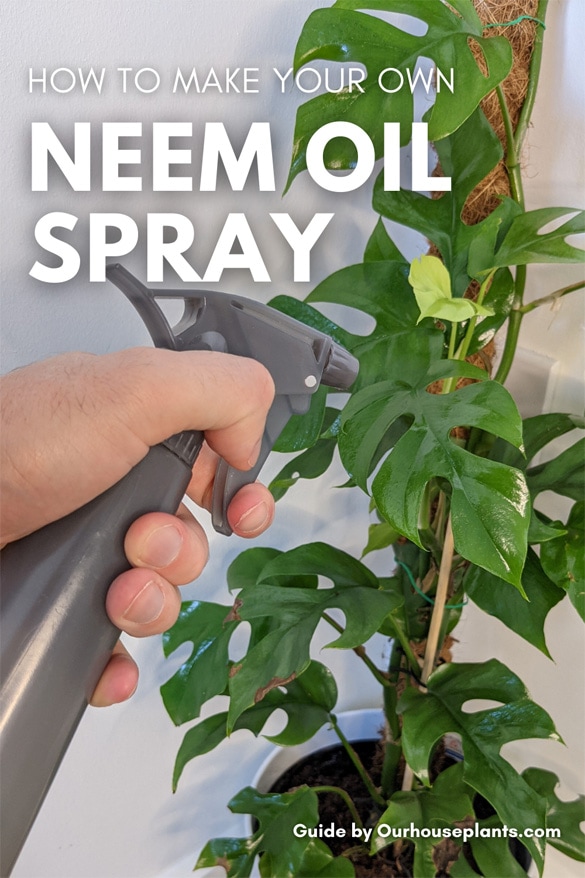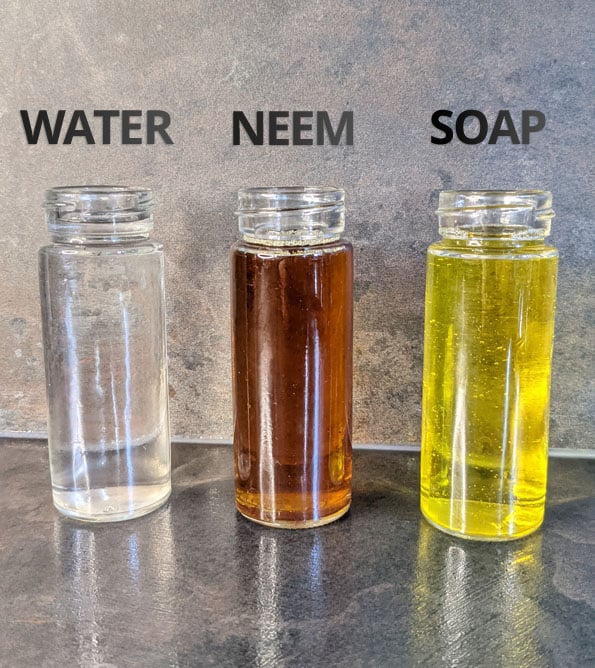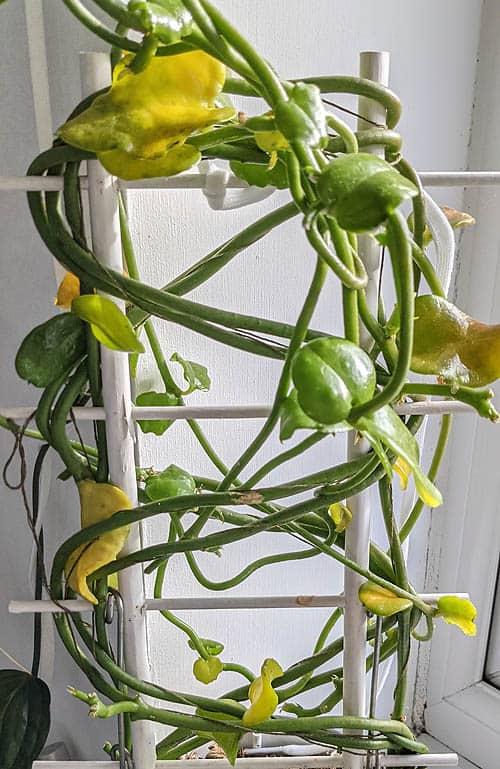Even if you've only been growing houseplants for a little while, chances are you've heard of "Neem Oil". But what is it?
Neem Oil comes from the seeds produced by the Neem Tree (Azadirachta indica), a fast-growing tree native to the Indian subcontinent. It has many uses, from skincare to neem cake fertilizer.
When it comes to plants, it's often used as a powerful and effective organic insecticide whenever pest infestations occur. It's especially useful to anyone looking for a relatively cheap natural alternative to synthetic pesticides.
Seeds of the Neem Tree (Azadirachta Indica) by Qniemiec.
Our article will tell you everything you need to know about Neem, how it works and is used to benefit and protect your plants. We also have a recipe for a DIY homemade spray.
Neem Oil is a natural pesticide and when it comes to controlling pests, it works in four broad ways.
When used correctly, Neem Oil has a range of applications and can help you tackle a wide range of problems.

Hi, I'm Tom!
If you're like me and enjoy the challenge of growing houseplants and getting them to thrive, then Ourhouseplants can help. This website shares my knowledge and years of growing plants and provides (hopefully) helpful advice on properly caring for your indoor plant friends.
After reading this far, hopefully, you're feeling optimistic about the benefits of using Neem. And so you should! For many people (including me), it ticks lots of boxes and is an effective product and natural solution for common houseplant pests.
Of course, as with anything, there are some important things to consider and be aware of. Here's seven.
When used correctly, neem oil is a powerful insecticide.
As we've explored above, the oil is extracted from the seeds produced by the Azadirachta indica tree. Like with many oils, it can be extracted from these seeds in multiple different ways. The method of extraction used determines what you're getting. In the majority of instances, the product you buy will be one of the following.
The first two, Clarified Hydrophobic Extract and Azadirachtin Extract are by-products created after the seeds have been highly processed. This might be acceptable for certain general uses such as in cosmetics. But this is not good for our intended use as an insecticide.
This is because many useful biochemical compounds and active ingredients have been removed and its effectiveness reduced.
Value for Money
You will only use a small amount each time you mix up a spray. So a bottle should easily last you for years, even with regular use.
100% Cold Pressed therefore is hands down the best you can buy, and what you should be looking for. It can be a little more expensive, but you'll get significantly better results in return.
Most garden centers will usually have it for sale, but if you're not keen on hunting around for the cold pressed version (or can't find it), Amazon's got your covered (links to some highly rated products below).
Okay! So you've read this far and are still keen making your own homemade Neem Oil Spray? The good news is that it's straightforward and you only need three ingredients along with a sprayer or mister to apply it.
Covering my Rhaphidophora Tetrasperma (Mini Monstera) with a homemade foliar spray.
This "recipe" will give you just over one liter of product which is probably more than enough to thoroughly treat a good number of plants in one go.
As mentioned earlier, the potency will rapidly decay once mixed up, so feel free to scale down (or up if necessary) the amount of ingredients if this volume is too much (or not enough) for your needs.
The goal is to thoroughly spray your plant until you've applied an even coating of the mixture all over the leaf surface. This will mean covering both the upper and underside of the leaves, which is often where insects will be hiding.
All of this spraying can pool on the leaf edges, which then drip onto whatever's below. You might also accidentally spray a little onto the surrounding surfaces.
Shelf - Life
Neem Oil's potency will rapidly decay once it's blended with water. The spray will keep for a day or two, at which point it will be better to mix up a new batch for maximum results.
Neem Oil doesn't typically stain or damage surfaces, but there is always the chance it could. It also smells quite strongly, so I gather all the plants to be treated and move them outside out of the way. This might be something you'd like to consider doing too, in order to avoid the above issues.
The leaves will dry off within a few hours at which point the strong smell should have dissipated (or at least reduced!). During this period, make sure you keep your plant out of direct sunlight because 1) The mixture can cause the sun to burn the leaves and 2) Sunlight will break down the Neem compounds and reduce its effectiveness as an insecticide.
You only need three simple ingredients to make an effective homemade neem oil spray.
Some insects live in the soil where a spray can't reach. Fungus Gnats in particular use the soil to lay their eggs and setting up home here is essential for their life cycle. A Neem Oil soil drench can be used to help deal with this as it will reach the pests living underground.
An additional benefit to a soil soak is that your plant will absorb the compounds from the oil and these will then reside in the plant's tissues for several weeks. Any insects feeding on the plant during this time will also be eating these compounds. Essentially it has now become a systemic insecticide.
All you have to do is pour the mixture we told you how to make into the soil. Just like if you were watering your plant make sure it can drain out freely. Your plant can now fight off insect pests by itself for a short time.
Patch Test
Usually, when used in low dosages, Neem Oil won't harm your plants. We recommend doing a "patch test" first as it's always possible a certain houseplant may react negatively.
Using as a soil drench is much more potent for the plant, so only do it after you've given spraying a try first.
Some houseplants are very large or have a huge surface area with lots of places insects can hide that make spraying difficult and finally some pests just won't leave and need tougher treatment. These situations are all ideal for using Neem Oil in a soil drench.
But we're raising our hand here and asking you to think twice before doing this. Many houseplants have a symbiotic relationship with the microbes that live in the soil that surround the roots.
We won't get too scientific, but just know that there is usually a good balance between your houseplant and the community of microorganisms that live around your plant's roots.
Studies show that it's likely that some of the air cleaning abilities of plants and the ability to remove toxins from the air comes from the microorganisms in the soil.
Neem Oil is strong stuff and has a potent anti-bacterial, anti fungicide and antimicrobial effect. Using it as a soil drench can seriously damage the community of microorganisms that aren't doing any harm.
While your plant will survive, it could lose some advantages given by these microorganisms helping it thrive. Remember, a leaf spray should typically produce effective results as well as provide a continuing protective effect.
TL:DR - Foliage Spraying should produce excellent results over time. A Soil drench, whilst also very effective, can have negative consequences so should only be used as a last resort.
It's important to buy as pure as possible. This means you know exactly what you're getting and can be sure you'll get the best results while treating your plants. We cover this in more detail here.
This can be a confusing topic, but it's important to get it right. So we've covered it here.
In low diluted concentrations, neem oil is normally very safe for humans and pets alike. Still take precautions, and wash your hands after use.
The undiluted oil can cause harm if ingested so you must keep it sealed and out of reach from kids and animals.
Theoretically, you can use it on all your indoor plants or herbs (and outdoor ones too, even ones you plant to eat). It can be sprayed on fruit trees and vegetables with no issues. However, the oil has a strong taste that could impact the flavor. So it's probably best to treat edible plants several weeks before you intend to harvest anything from them.
As fungus gnats live part of their life under the soil, you will need to treat the soil to ensure you get them all. Read our Soil Drench section for a how-to.
Fortunately, pests problems aren't too common for most indoor gardeners. But if for some reason your plants are very prone to pests, you can use our basic spray mixture as a preventative measure. Simply use the spray lightly once a month and this should repel most insects.
The effects are diminished when exposed to sunlight so it's best to apply it either very early in the morning or late at night.
You can reapply the spray around five days after the previous application. You might still notice insects crawling around a few weeks later. This can be unbelievably frustrating and you might even think the neem's not working. Don't drastically increase the concentration, continue to apply conservatively every four or five days and be patient as the effects take time to work.
Although the spray will start to work as soon as it's applied, it will generally take at least a week or two before you see positive results. It could be a couple more before your plant is completely clear. Bear with it though. Neem will normally have good long-term results and a degree of pest resistance from future issues.
Some houseplants will have a sensitivity to neem. Other plants may also have a sensitivity to the dish soap. We recommend doing a patch test on a leaf and waiting a few days before spraying the entire plant.
Some plants should not be treated with neem / dish soap at all. Don't use it on any carnivorous plant like the Sarracenia or Venus Flytrap. Take extra care with more fussy houseplants like Ferns, which can respond poorly to any spray, whether its synthetic or natural.
If it's not been applied to a "sensitive" plant listed in the previous question, then it's likely you've used too much of the oil in the mixture. Pure neem oil is potent and concentrated stuff, you really don't need to use a great deal for effective results.
The rapid yellowing and excessively shiny leaves on this Parachute Plant (Ceropegia sandersonii) strongly indicates that too much neem was used in the spray.
Another possibility is that you've used a shop brought ready mixed spray, or you've not got 100% cold pressed (which I strongly recommend). In both cases, you don't know what's been added to the product, and this could be what's damaged your plant.
How do you use this amazing product? Have you got any tips, success stories to share? If so please let us know in the comments below.
Credit for the Seeds of the Neem Tree photo (Azadirachta Indica) by Qniemiec
